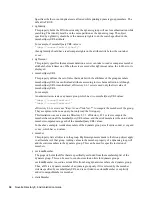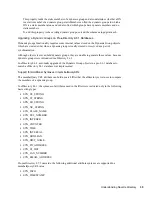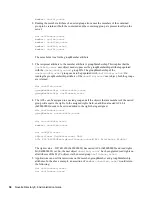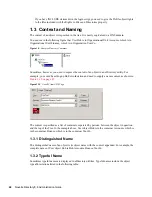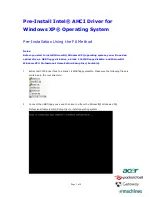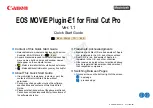
46
Novell eDirectory 8.8 Administration Guide
no
vd
ocx
(e
n)
6 Ap
ril 20
07
Each class has a class name, an inheritance class (unless it is at the top of the class hierarchy), class
flags, and a group of attributes. Classes are named like directory objects (User, Printer, Queue,
Server, etc.), yet they are just structure, with no content.
An inheritance class is a class that is a starting point for defining other object classes. All of the
attributes of the inheritance class are inherited by the classes that come below it in the class
hierarchy.
A class hierarchy shows how a class is associated with its parent classes. This is a way of associating
similar classes and allowing attributes to be inherited. It also defines the types of containers the class
is valid in.
When creating a new class, you can use the class hierarchy and the additional attributes available to
customize each class. You can specify an inheritance class (which allows the new class to inherit all
of the attributes and flags of a class higher in the hierarchy) and then customize the new class by
selecting one or more attributes to add to those that were inherited. The additional attributes can be
selected as mandatory, naming, or optional attributes.
You can also modify existing classes by adding optional attributes.
Attributes
Attributes are the data fields in the eDirectory database. For example, if a class is like a form, then
an attribute is one field on the form. When an attribute is created, it is named (such as
surname
or
employee number
) and given a syntax type (such as
string
or
number
). From then on, it is available
in the attribute lists in Schema Manager.
Syntaxes
There are several syntax options to choose from. These are used to specify the type of data entered
for each attribute. The syntax can be specified only when an attribute is created. You cannot modify
it later. Available syntaxes include the following:
Backlink
Used to keep track of other servers referring to an object. It is used for internal eDirectory
management purposes.
Boolean
Used by attributes whose values are True (represented as 1) or False (represented as 0). The
single-valued flag is set for this syntax type.
Case Exact String
Used by attributes whose values are Unicode strings that are case sensitive in comparison
operations. Two Case Exact Strings match when they are of the same length and their
corresponding characters, including case, are identical.
Case Ignore List
Used by attributes whose values are ordered sequences of Unicode strings that are not case
sensitive in comparisons operations. Two Case Ignore Lists match if the number of strings in
each is the same and all corresponding strings match (that is, they are the same length and their
corresponding characters are identical).
Case Ignore String
Summary of Contents for EDIRECTORY 8.8 SP2
Page 4: ...novdocx en 6 April 2007...
Page 116: ...116 Novell eDirectory 8 8 Administration Guide novdocx en 6 April 2007...
Page 128: ...128 Novell eDirectory 8 8 Administration Guide novdocx en 6 April 2007...
Page 255: ...256 Novell eDirectory 8 8 Administration Guide novdocx en 6 April 2007...
Page 406: ...408 Novell eDirectory 8 8 Administration Guide novdocx en 6 April 2007...
Page 563: ...566 Novell eDirectory 8 8 Administration Guide novdocx en 6 April 2007...
Page 573: ...576 Novell eDirectory 8 8 Administration Guide novdocx en 6 April 2007...
Page 601: ...604 Novell eDirectory 8 8 Administration Guide novdocx en 6 April 2007...



